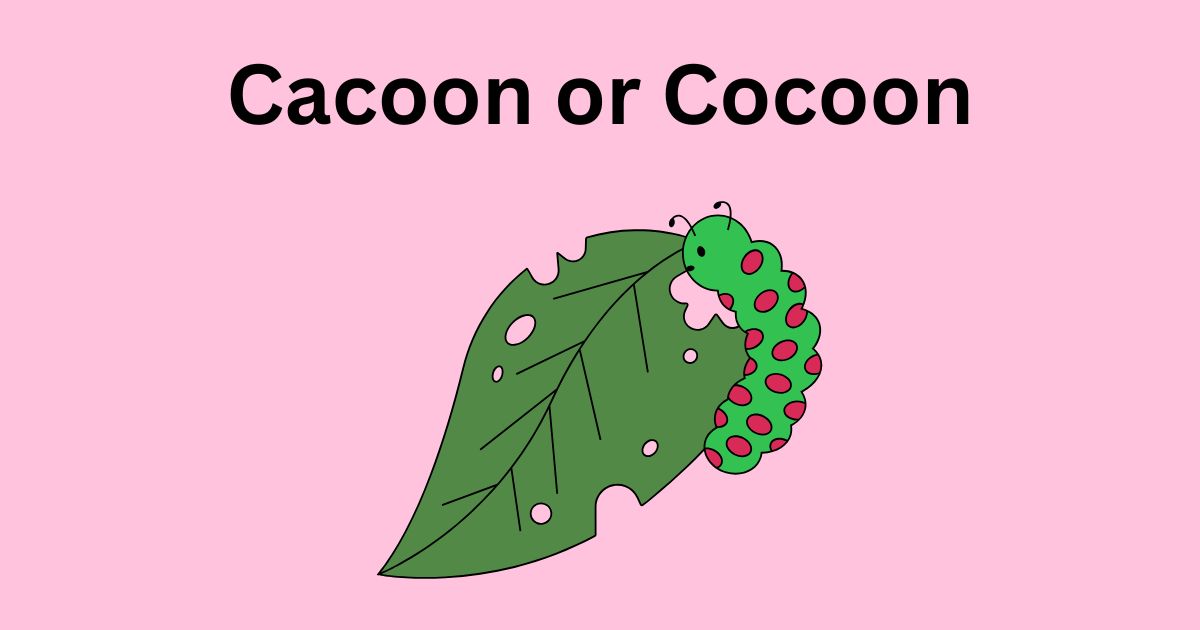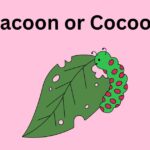You’ve probably come across both “cacoon” and “cocoon” and wondered which one is correct. Maybe you’ve seen “cacoon” used online or even heard someone pronounce it that way. So, is “cacoon” a real word, or is it just a common mistake?
Let’s clear up the confusion once and for all. The correct spelling is “cocoon.” “Cacoon” is simply a misspelling. But why do so many people get it wrong? Let’s dive into the origins, pronunciation, meaning, and proper usage of “cocoon” to understand why this mistake happens.
Is “Cacoon” a Real Word or Just a Mistake?
The short answer—“cacoon” is not a real word. It’s a common spelling error. Some people type “cacoon” instead of “cocoon” because it looks phonetically similar. This mistake is especially common among non-native English speakers and children who are still learning to spell.
In dictionaries, you won’t find “cacoon” listed because it has no meaning. If you use it in writing, spellcheck tools will likely flag it as incorrect.
Spelling and Pronunciation – How to Get It Right
The correct spelling is “cocoon” (not “cacoon”), and it is pronounced as /kəˈkuːn/ (kuh-KOON). The confusion mainly comes from how people interpret the way the word sounds.
People sometimes mishear “cocoon” as “cacoon” because of how vowels can blend in spoken English. However, in standard English pronunciation, there is no version where “cacoon” is correct.
To remember the correct spelling, think of the double “o” in words like “balloon” or “moon”—both of which have a long “oo” sound, just like “cocoon.”
Origins and History of the Word “Cocoon”
The word “cocoon” comes from the French word “cocon,” which originally referred to the silk casing spun by larvae before they transform into butterflies or moths. This term was later adopted into English in the 17th century.
Over time, “cocoon” has also taken on metaphorical meanings, referring to anything that encloses or protects something, like being in a “cocoon of comfort” or a “cocooned lifestyle.”
The Meaning and Significance of “Cocoon”
In its literal sense, a cocoon is the protective case spun by insects, particularly silkworms and butterflies, during their pupal stage. This structure shields them from external dangers as they undergo transformation.
Beyond science, “cocoon” is widely used metaphorically to describe protection, isolation, or transformation. Someone who is emotionally distant might be said to be “cocooning themselves” away from others. A person taking time for self-improvement might be seen as preparing to “emerge from their cocoon.”
Key Differences Between “Cacoon” and “Cocoon”
Correct vs. Incorrect Spelling
Cocoon → Correct spelling
Cacoon → Incorrect spelling
Meaning & Usage in Language
“Cocoon” is used to describe an insect’s protective shell, but it is also used metaphorically to describe protection, comfort, or transformation. “Cacoon” has no meaning.
Read Also: Totalling or Totaling – Which Spelling is Correct and Why?
Pronunciation – Why It Causes Confusion
Because of how people hear the word, some mistakenly assume “cocoon” should be spelled “cacoon.” However, the correct pronunciation is kuh-KOON, not kah-KOON.
Practical Examples – How to Use “Cocoon” Correctly
Scientific Context
- A butterfly cocoon is a protective case where metamorphosis occurs.
- Silkworms spin cocoons made of silk fibers.
Metaphorical & Everyday Use
- She has been in a cocoon of self-care, avoiding social events.
- The cozy blanket wrapped around her felt like a cocoon of warmth.
- After a tough year, he is finally breaking out of his cocoon and embracing life again.
Literary and Pop Culture References
The concept of a cocoon is often used in literature and media to symbolize personal growth or transformation. Popular movies and books frequently reference cocoons in relation to change, rebirth, and shelter.
For example:
- In sci-fi, alien species are often shown inside cocoons before hatching.
- Fairy tales and mythology sometimes use the idea of a cocoon to represent hidden potential.
Fun Facts About Cocoons
- The world’s finest silk comes from silkworm cocoons.
- Butterflies do not spin cocoons—only moths do. Butterflies form a chrysalis instead.
- Some insects create fake cocoons to trick predators.
- The word “cocooning” is used in business to describe consumers staying home instead of going out.
Conclusion
If you ever find yourself wondering whether to write “cacoon” or “cocoon,” remember that “cocoon” is the only correct spelling. “Cacoon” is a mistake and doesn’t exist in English.
A cocoon is not just a protective shell for insects; it has also become a powerful metaphor for safety, change, and transformation. Whether you’re describing an insect’s life cycle or someone going through personal growth, “cocoon” is always the right word to use.
So next time you see “cacoon” somewhere, you’ll know it’s a mistake—and now, you can confidently explain why!

Theodore is a language expert dedicated to enhancing writing skills through clear grammar guidance. Specializing in writing tips, plural nouns, and language devices, he simplifies complex rules to help writers communicate effectively and confidently.










